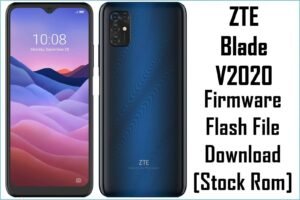The ZTE Blade S6 is a mid-range smartphone from 2015 that gained attention for its sleek, rounded design and for being one of the first devices in its class to feature a 64-bit octa-core processor, the Qualcomm Snapdragon 615. It also introduced unique “Smart Sense” gesture controls and shipped with Android 5.0 Lollipop. This guide provides the official stock ROM, a low-level QFIL / EDL package, designed to unbrick a hard-bricked phone, resolve persistent software errors, or perform a complete factory restore.
Important: This is an advanced unbricking procedure. This firmware is specifically for the ZTE Blade S6. The flashing process requires your phone to be in EDL Mode (9008), and the process will erase all data.
Quick Device Specs
- Device: ZTE Blade S6
- Release year: 2015
- Chipset: Qualcomm Snapdragon 615
- Display: 5.0″ IPS LCD, HD
- Battery: 2400 mAh
- Original OS: Android 5.0 (Lollipop)
Required Downloads
To flash a Qualcomm device in EDL mode, you will need the specific QPST suite and drivers. You can find the downloads for these in our main guide linked below.
- QPST & QFIL Flash Tool
- Qualcomm QDLoader USB Drivers
Unbrick Firmware (QFIL)
| Build Date | Type | Download | Chipset |
|---|---|---|---|
| 2016-03-26 | QFIL EDL Unbrick ROM | Download | Qualcomm |
How to Flash the Stock Firmware
Restoring a bricked ZTE Blade S6 requires a Windows PC and the QFIL tool. The process involves installing the correct Qualcomm drivers, forcing your phone into EDL Mode by holding Volume Up + Down and connecting the USB cable, loading the firehose programmer and XML files from the firmware, and then starting the download.
For a detailed, step-by-step guide with screenshots and tool download links, please follow our comprehensive pillar guide: How to Use QFIL to Flash Qualcomm Devices.
Device-Specific Troubleshooting for ZTE Blade S6
- “No Port Available” / Driver Issues: This is the most common problem. If QFIL doesn’t see the “Qualcomm HS-USB QDLoader 9008” port, your drivers are not installed correctly. You must disable Driver Signature Enforcement in Windows before running the driver installer. Reboot your PC after installation and try again.
- Snapdragon 615 Overheating: The Snapdragon 615 chipset in this phone is well-known for overheating. During heavy use like gaming, the phone can become very hot, and performance may slow down (throttle). A clean flash can resolve software-related heat issues, but be aware that this is a hardware characteristic of this processor.
- Entering EDL Mode: Ensure the phone is completely powered off. Press and hold both Volume Up and Volume Down buttons simultaneously. While holding them, plug the USB cable into the phone. The screen will stay black, but your PC should make a sound, and the port will appear in QFIL.
- Using an Older QFIL Tool: For a classic device like the Blade S6, the latest versions of QPST might have issues. If you encounter errors like ‘Sahara Fail’ or ‘Firehose Fail’, try using a stable, older version of the tool in conjunction with the correct drivers.
FAQs
Q1. What is the difference between the Blade S6 and the S6 Plus?
The Blade S6 Plus is the larger “phablet” model, featuring a 5.5-inch screen compared to the 5.0-inch screen on the standard Blade S6. It also has a larger battery to compensate for the bigger display.
Q2. What were “Smart Sense” gestures?
This was ZTE’s name for a suite of motion and gesture controls. For example, you could shake the phone vigorously to turn on the flashlight, or draw a “V” on the locked screen to launch the music player without waking the phone first.
Q3. My phone gets very hot. Will flashing this ROM fix it?
Flashing the stock ROM can help if rogue software or apps are causing the overheating. However, the Snapdragon 615 processor is naturally prone to running hot, so a clean flash may not completely solve the issue if you are performing demanding tasks.
Q4. What is a QFIL / EDL firmware?
QFIL (Qualcomm Flash Image Loader) is a tool used to flash firmware in EDL (Emergency Download) mode. This is a very low-level mode designed to recover Qualcomm devices from a “hard brick” state where they are otherwise unresponsive.



